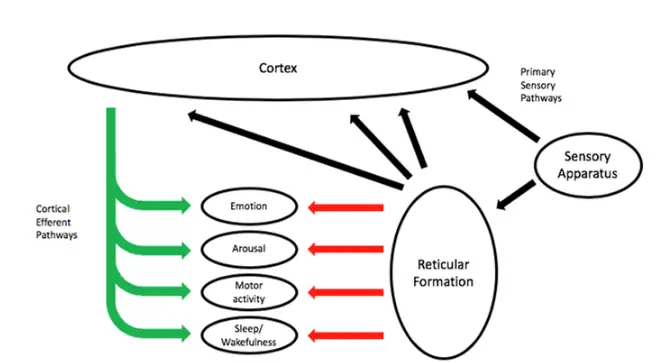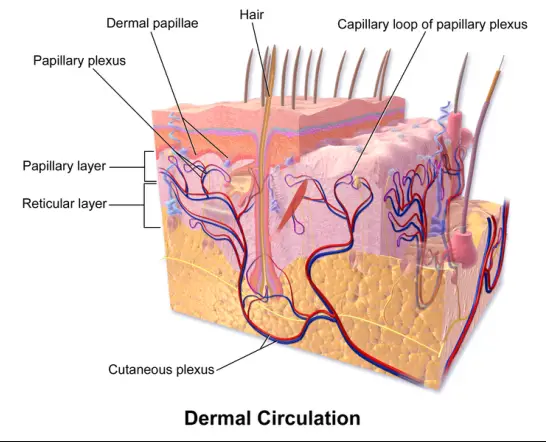The skin is the body’s largest organ, serving as a vital barrier protecting against external harms. Within its complex structure, the dermis plays a crucial role, consisting of two distinct layers: the papillary and reticular layers. These layers, though closely interconnected, perform unique functions that are essential for the skin’s health and resilience.
The papillary layer, located directly beneath the epidermis, is thin yet rich in blood vessels and nerve endings, providing nutrients and sensory feedback. Conversely, the reticular layer is thicker and lies below the papillary layer, consisting primarily of collagen and elastin fibers that offer strength and elasticity to the skin. This section distinguishes itself by providing structural support and resilience, crucial for overall skin integrity.
Understanding the differences between these layers is not just a matter of academic interest; it has practical implications for dermatology and cosmetic science. Each layer’s unique structure and function contribute to the skin’s appearance, feel, and health, impacting everything from aging to the ability to heal wounds.

Papillary Layer
Definition and Location
The papillary layer is the uppermost section of the dermis, situated just beneath the epidermis, the outermost layer of the skin. This proximity to the skin’s surface makes the papillary layer pivotal in both the provision of nutrients to the epidermis and in facilitating the skin’s sensory functions.
Composition and Structure
Structurally, the papillary layer is characterized by thin, finger-like projections called papillae, which interlock with the epidermis to increase the surface area for nutrient and gas exchange. These projections are rich in capillaries and a fine network of collagen fibers intertwined with elastic fibers. The presence of hyaluronic acid in this layer helps in maintaining hydration and provides a jelly-like matrix that supports the cells and fibers.
Functions and Roles
The primary roles of the papillary layer include:
- Nutrient Supply: It ensures that the epidermis receives essential nutrients through its dense capillary network.
- Sensory Functions: It houses nerve endings that are responsible for transmitting sensations of touch, pain, and temperature.
- Thermal Regulation: The layer helps in regulating body temperature through its blood vessels, which can dilate or constrict based on thermal stimuli.
Reticular Layer
Definition and Location
Located directly beneath the papillary layer, the reticular layer forms the bulk of the dermis. This layer extends down to the subcutaneous tissue, which contains fat and larger blood vessels.
Composition and Structure
The reticular layer is much thicker than the papillary layer and is composed predominantly of collagen and elastin fibers. These fibers are arranged in a dense, irregular network that provides structural support and elasticity to the skin. Additionally, this layer contains larger blood vessels, sweat glands, sebaceous glands, and hair follicles, all embedded within a collagenous matrix.
Functions and Roles
The reticular layer’s functions are critical for maintaining the skin’s structural integrity:
- Structural Support: It supports the skin through its dense, fibrous network, enabling the skin to withstand stretching and tearing.
- Elasticity: Elastin fibers allow the skin to return to its original shape after being stretched.
- Housing Appendages: It contains the roots of hair follicles, sweat glands, and oil glands, playing a key role in skin hydration and thermoregulation.
Comparative Analysis
Structural Differences
The papillary and reticular layers differ markedly in structure. The papillary layer, with its thin, loose arrangement of fibers, contrasts with the dense and robust network of the reticular layer. The papillary layer’s primary structural component is fine collagen fibers, whereas the reticular layer features thick bundles of collagen that provide tensile strength and elasticity.
Functional Variances
Functionally, these layers complement each other but have distinct roles. The papillary layer focuses on nourishment and sensory input, critical for immediate reactions to the environment, such as touch and temperature changes. In contrast, the reticular layer provides long-term structural integrity, enabling the skin to recover from physical stresses and strains. These differences underscore the specialized functions that each layer performs in maintaining overall skin health and functionality.

Clinical Significance
Impact on Skin Health
The health of the papillary and reticular layers is vital for overall skin function and appearance. The papillary layer plays a crucial role in the skin’s ability to heal wounds due to its rich vascular network, which can quickly mobilize nutrients and immune cells to injury sites. Any damage to this layer can lead to impaired sensory functions and slower wound healing.
Conversely, the reticular layer significantly influences the skin’s aging process. As this layer loses collagen and elastin over time, it leads to the formation of wrinkles and sagging skin. Maintaining the integrity of this layer is essential for keeping the skin firm and resilient.
Relevance in Medical Conditions
Various dermatological conditions directly relate to disturbances in these dermal layers:
- Psoriasis and Eczema: These conditions manifest with significant changes in the papillary layer, such as increased capillary growth and inflammation.
- Skin Aging and Wrinkles: The breakdown of collagen in the reticular layer is a primary cause of visible aging signs.
- Scar Formation: Abnormal collagen deposition, especially in the reticular layer, can lead to hypertrophic scars or keloids.
Advances and Research
Recent Studies
Recent studies in dermatology have focused on understanding how these layers interact at a molecular level and how this interaction affects skin diseases. For instance, research has shown that the papillary layer’s thinness makes it particularly susceptible to ultraviolet radiation damage, which can accelerate skin aging and increase cancer risk. Studies have also explored how enhancing collagen production in the reticular layer can improve skin elasticity and reduce aging signs.
Future Directions
Looking ahead, the field of dermatological research is moving towards more targeted therapies that address specific layers of the skin. Innovations include:
- Gene Therapy: Potential treatments could target gene expressions involved in collagen and elastin production, improving the structural integrity of the reticular layer.
- Layer-Specific Drug Delivery Systems: These systems could directly deliver therapeutic agents to either the papillary or reticular layer, optimizing treatment efficacy for conditions like psoriasis or deep tissue scars.
Frequently Asked Questions
What is the Dermis?
The dermis is the middle layer of the skin located between the epidermis and subcutaneous tissue. It supports the epidermis, supplying it with nutrients and housing critical components such as sweat glands, hair follicles, and blood vessels.
How Does the Papillary Layer Affect Skin Health?
The papillary layer affects skin health by facilitating nutrient delivery to the epidermis and providing temperature regulation. Its network of capillaries and nerve endings plays a vital role in sensory perception, such as touch and pain.
What Role Does the Reticular Layer Play?
The reticular layer is fundamental in providing structural strength to the skin. Its dense network of collagen and elastin fibers helps prevent skin tearing and enables it to stretch and retract, essential for mobility and flexibility.
How Do Age and Environmental Factors Affect These Layers?
Age and environmental factors like UV exposure and pollution can degrade collagen and elastin in the reticular layer, leading to wrinkles and decreased skin elasticity. The papillary layer can also thin, reducing the skin’s overall ability to regenerate.
Conclusion
The papillary and reticular layers of the dermis are integral to our understanding of skin health and its functional dynamics. Their distinct roles, from sensory perception in the papillary layer to structural support in the reticular layer, underscore the complexity of skin biology. Recognizing how these layers work helps us appreciate the skin’s resilience and the challenges it faces from aging and environmental factors.
With ongoing research into how these layers function and interact, we can better approach skin care and treatment strategies that enhance skin health and mitigate the effects of aging and external damage, leading to improved outcomes in dermatological health and cosmetic appearance.

